Portraits of Survival
Fabian Carrasco:The Driver
The coronavirus dealt a blow to already bruised and battered communities in rural America, where the recovery may take years.
Brian F. Shortridge, 42, has lived in Grundy, Virginia, a small Appalachian town, his entire life. He knows better than anyone how badly the town was doing, even prior to March 2020.
“So it’s not like, oh, OK, well, this factory didn’t open here because of COVID, no, no, that wasn’t going to happen anyway,” Shortridge said. “It’s not like all these businesses shut down because (of) COVID. It wouldn’t do anything, because they’re shut down to start with, you know.”
Tom Mueller, an assistant professor of sociology at Utah State University, studies health and well-being in rural America. He said rural America won’t bounce back “super quickly overall” from the pandemic.
“Rural America was already on a long road, and the road probably just kind of got a little longer,” Mueller said.
Residents flee rural areas because of limited economic opportunities, leaving behind an aging population. And the distance to urban centers brings its own social isolation. But, in some communities, the coronavirus was a temporary financial injection.
About 2 in 10 people lived in rural America as of 2016, according to the Census Bureau. Some make their homes in factory towns, melding immigrants with longtime residents. They are in coal-mining country, on Native American reservations, nestled close to cities or separated by miles of roads, farms or ranches.
“Rural America is not a monolith situation,” Mueller said. “Although rural America is more conservative and whiter and older than the rest of the population, overall, it is a lot more diverse in terms of race, ethnicity, gender, sexual orientation and politics than often perceived.”
Rural America’s diversity extends to how it was affected by COVID-19. Each area had differences in how it responded to the crisis and in how COVID-19 touched the town, and rural residents have different perspectives of the pandemic.
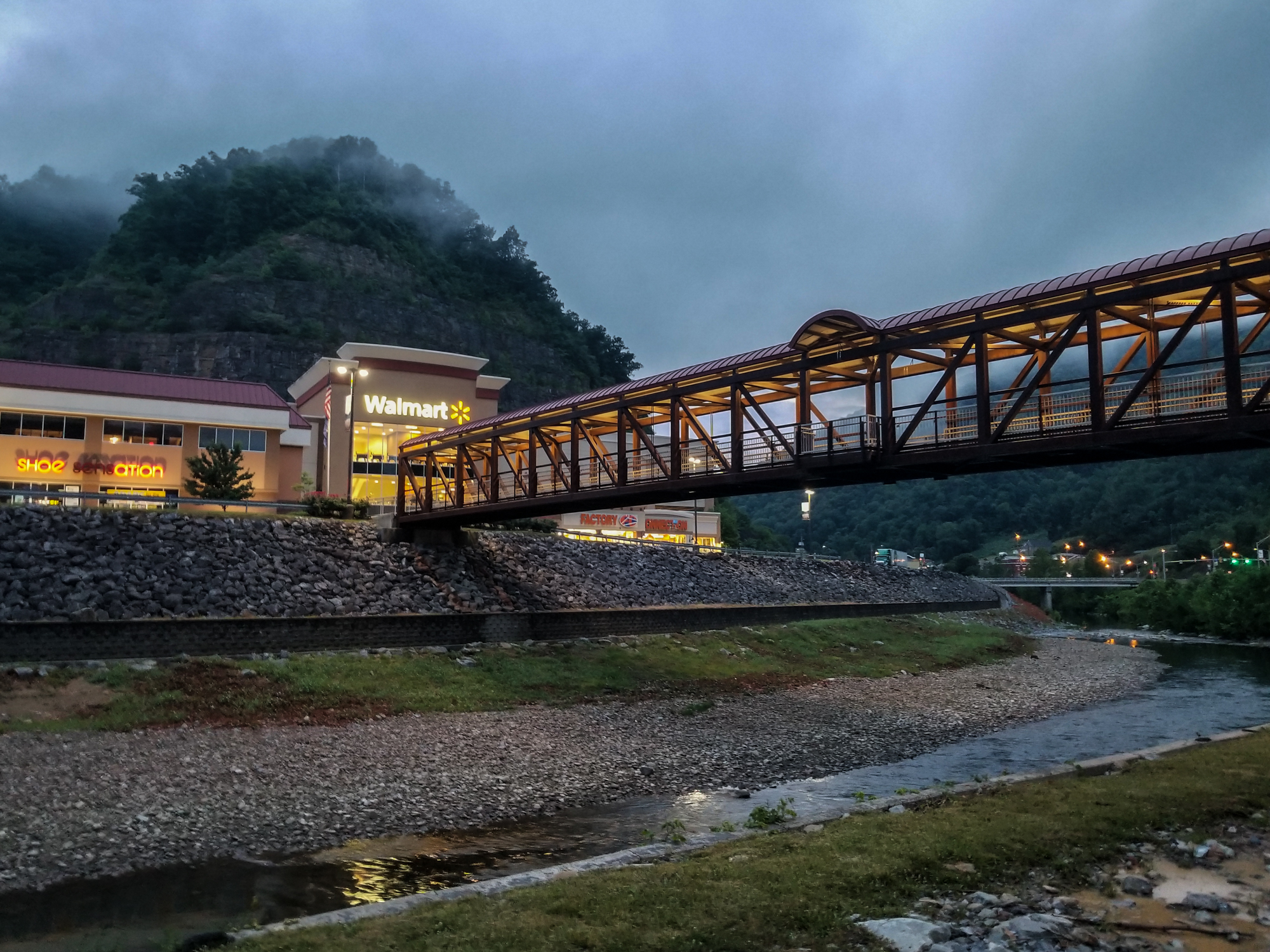
A Walmart and nearby stores bring customers to the areas that used to be downtown Grundy, Virginia. Economic decline in the former coal mining town and a massive flood-control effort removed much of the original town. (Michael Patton/News21)
Karen Brown, 54, a lifelong resident of Grundy, never saw a reason to worry about the town’s future. Grundy is the seat of Buchanan County. Buchanan had a lot of coal, and coal was worth a lot of money. In the early 1980s, Brown said, it was called the richest county per capita in the country.
After she graduated from Grundy High School in 1985, Brown became a teacher and then an administrator, working in the same school she went to. A lot of the classmates she graduated with work in the school system with her, and she knows of others still working in Grundy, as chiropractors, dentists or engineers.
Then, in the mid-1990s and the early 2000s, the coal industry collapsed and left town, taking most employment with it.
Now working as the principal, Brown spends her days in the same building that used to house 1,000 sophomores, juniors and seniors. Today, 36 years after she graduated, it houses the 362 students who make up grades nine, 10, 11 and 12.
Grundy is shrinking.
Shortridge acts as the town librarian and historian and said it’s as if a brain trust leaves every year after graduation. Fifty valedictorians graduated from Buchanan County schools from 1990 to 2000. By 2012, only two of those students still lived in Buchanan.
Every other valedictorian, Shortridge said, left.
“They were born here in Buchanan County. They were educated here in Buchanan County,” he said. “But as an adult, they found greater prosperity somewhere else.”
Over eight years through 2018, the population in Buchanan County dropped by more than 10%.
Births in the U.S. have dropped overall, to about 53.9 births per 1,000 women in 2020, according to the Centers for Disease Control and Prevention.
“Now, if those children were just delayed, it’s one thing,” said Kenneth Johnson, senior demographer at the Carsey School of Public Policy. “If some of those babies never get born, that’s going to have an effect on the future demographic patterns.”
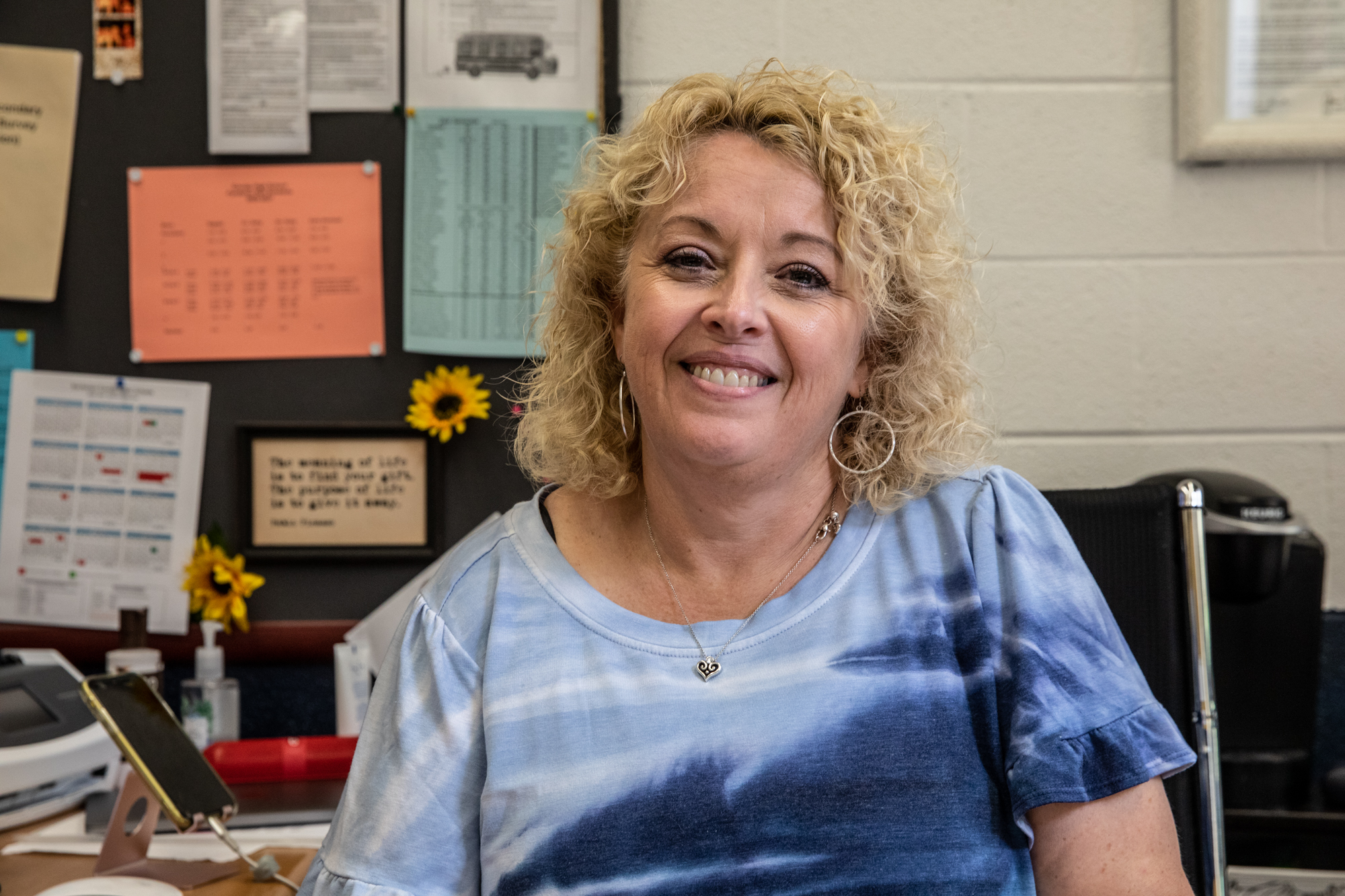
Karen Brown, principal of Grundy Senior High School. (Michael Patton/News21)
Birth rates in rural America have been falling more slowly than in urban America, according to a demographer in the Daily Yonder, a national news organization for rural areas, but Johnson said other factors contribute to an increased population drop during the pandemic.
“Rural America also has an older population, which puts it at greater risk from COVID, and also has more underlying health conditions, which also increased the risks to the rural counties,” Johnson said. “On top of that, of course, they have less access to sophisticated medical care.”
As awful as the virus was, it brought something good to Buchanan County.
“This probably would be an economic benefit for us,” Shortridge said. “Because suddenly all these federal dollars got dumped in.”
The Brookings Institution reported this year that though the stimulus money does not “offer special treatment to rural Americans,” because of disproportionate levels of poverty and unemployment, some rural areas may in the end benefit more than urban areas.
In 2019, the yearly per-capita income in Buchanan County was $19,496, according to data from the Census Bureau. The income provided by stimulus checks alone has totaled about $3,100 per person in Buchanan — an overall income boost of 16% — added to unemployment benefits and other assistance from various federal COVID-19 aid bills.
Shortridge has more money than he ever has, but he sometimes thinks of it as blood money. The virus that killed more than 600,000 people in the U.S. led to the deaths of 45 people in Buchanan County.
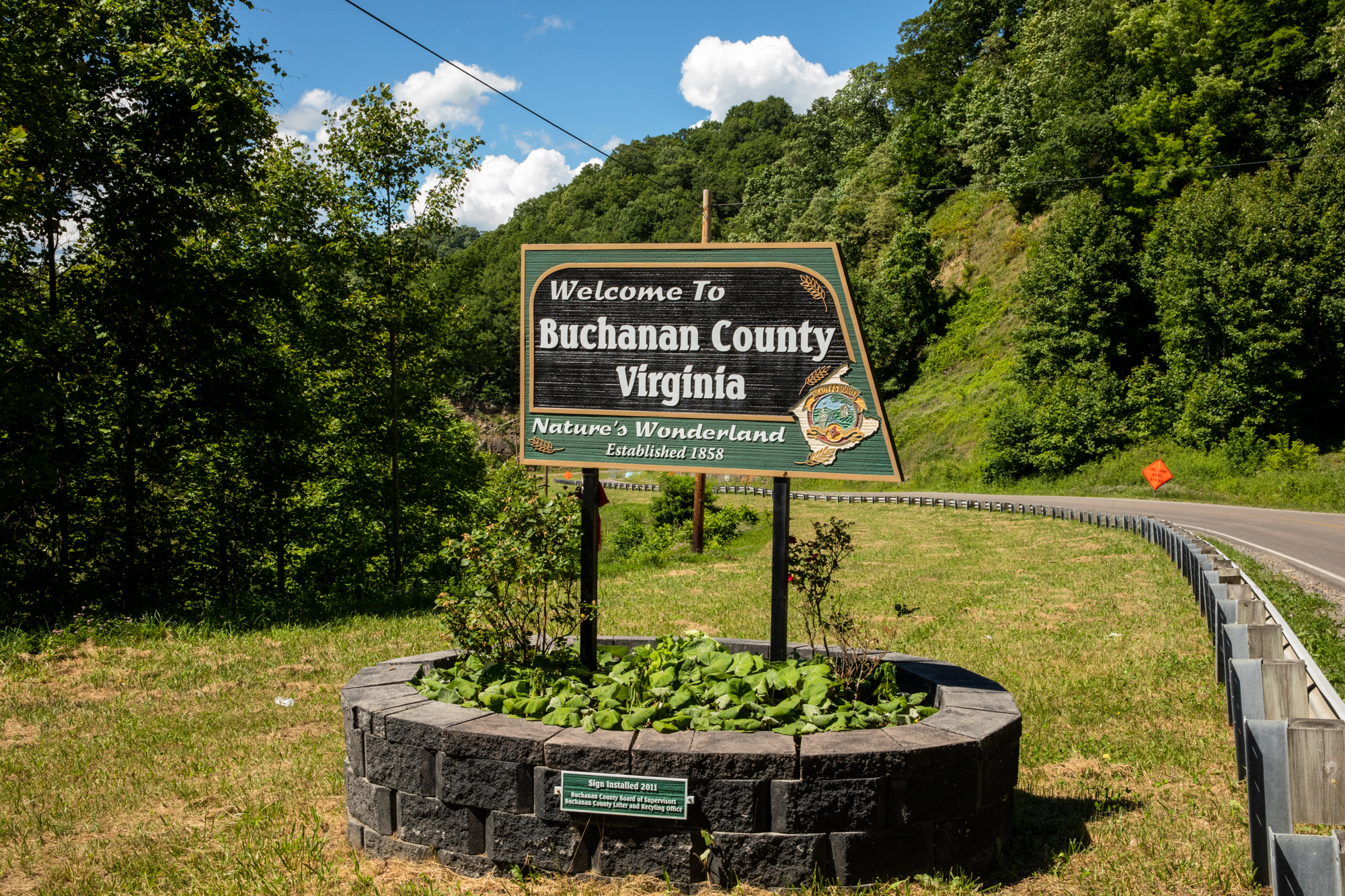
Economic woes for Buchanan County started in the 1960s, when the coal industry began to falter. (Michael Patton/News21)
On a Monday morning in early July, Fabian Carrasco picks up two friends in Storm Lake, Iowa. It’s going to take another hour to drive to the house they have been hired to renovate, but the mood in the car is joyful and loud. Phones ring with incoming calls from their girlfriends, and they pass the phones to one another, laughing and poking fun.
All three feel lucky to have a job. Ever since the pandemic, construction jobs have been scarce in Storm Lake. Most of the time, if they do get a job, they sometimes have to drive up to four hours to get to it.
Carrasco, speaking in Spanish, said costs and competition have gone up and pay has gone down.
“I don’t do work for people in the upper class, who have a lot of money. I work for lower-class people,” Carrasco said. “Those people in the lower class, most have little budget, and the little they have, they are afraid to spend it and be left with nothing.”
More construction companies have also popped up. That has also led to a decline in income.
Across the U.S., rural workers are more likely than urban workers to be self-employed or to work at small businesses, and these workers are more likely to be Hispanic, according to a February 2021 study. Small businesses always provided less job security and COVID-19 emphasized this, with workers at businesses with fewer than 10 employees having an unemployment rate of more than 18% in April 2020.
Fabian Carrasco is the owner of a small construction business in Storm Lake, Iowa. During the pandemic, he was forced to lay off most of his employees and lost his business. With the cost of materials sky high and clients' unwilling to pay the normal rate, Carrasco has a tough time keeping the few employees he has. But he takes care of them. Carrasco drives his employees to the work sites and pays for their lunch so that every cent they earn goes to their families. (Video produced by Brenda Maytorena Lara/News21)
Carrasco immigrated to the U.S. from Cuba, first making his way to Florida and then being lured to Storm Lake by the promise of a job. He drove more than 20 hours to get to the Midwestern town, a city of green, rolling hills and farmland, over 100 miles from Omaha.
Storm Lake was welcoming new residents almost every year, starting at the end of the Vietnam War, when Iowa was the first state to offer resettlement assistance. Most were immigrants, a steady flow of workers over four decades who were enticed by well-paying factory jobs.
Carrasco worked for 18 months at a Tyson food factory before an injury made it impossible for him to stand for long periods of time. He tried other work as a mechanic before switching from an employee to the owner of a business.
He started a construction company in 2019. By the end of that year, he owned a truck and had as many as 10 people working for him. They would gut a house or build a new roof — always busy.
Then, COVID-19 hit. The first months of the pandemic were brutal for Carrasco. The calls for work slowed to a trickle, and when he did get a contract, the money wasn’t as good. Often, he worked alone.
“I distanced myself away from everyone,” Carrasco said. “Right now there is no problem like before, because almost all of us are vaccinated. But the fear remains of what happened and how many people lost their lives. That fear is still there.”
In 2020, tax filings show, Carrasco’s business lost $17,846.
Carrasco didn’t apply for any of the aid that was offered to small businesses at the time, because he didn’t speak enough English to understand the application process.
“When it comes to applying for aid, applying to something, I was afraid that I didn’t understand a lot of things, that if I asked for help, that in the end they would charge me on the back end,” Carrasco said. “I didn’t know how to ask for it, either. I didn’t know how to do it. I didn’t even have someone to help me apply for help.”
Following the long months of the pandemic, Carrasco picked up small jobs wherever he could. The money worries, he said, were constant.
He struggled to make the payments on the car and the house he had been so proud of having just the year before. The jobs he did find didn’t pay much, and most of them barely paid at all when the cost of materials and the gas it took to get there was taken out. Oftentimes, he would stay long into the night to finish the jobs he did get, struggling to work by himself.
In the summer, as the country slowly reopened, construction business picked up. Recently, he has had enough money to hire two to three people to work with him.
Carrasco still doesn’t make a lot of money — in order to make sure the people he hires have enough money to feed their families, he pays for their lunches and the gas money to get them to jobs. Some weeks, he doesn’t make a profit.
Rexanne Holy Dance watches the Fourth of July fireworks with her daughter, Leeann Lena on July 3 in Pine Ridge, South Dakota. (Brenda Maytorena Lara/News21)
“We walk quite a ways just to get to town, sometimes almost six or seven miles until we get a ride,” said Rexann Holy Dance, a single mother living on the Pine Ridge Indian Reservation in South Dakota. “Sometimes that road is not good on me and my little girl’s feet — it’s really harsh, the rocks and everything.”
Holy Dance lives in a small two-bedroom home she inherited from her father about 15 miles outside of Pine Ridge, a town of about 3,600 people that serves as the tribal headquarters for the Oglala Sioux Tribe.
The Oglala Sioux Tribe of Pine Ridge was at high risk during the pandemic. Oglala County had three times the rate of diabetes, a life expectancy about 10 years lower than the national average prior to COVID-19 and a per-capita annual income of only $8,800, according to government data.
The tribal government declared a state of emergency in March 2020, restricting travel, limiting public gatherings and downshifting its public transit system to serve only those who needed to make scheduled medical appointments, according to the emergency order.
Holy Dance had relied on the Oglala Sioux Tribal Transit system for transportation ever since her car broke down. Her previous source of income, selling beadwork at markets in nearby towns, became infeasible, and even simply acquiring food, was an ordeal.
Added to everything else, “It was lonely.”
“I was just to a point where it was so lonely that it was just silent and silent and silent. There was no traffic on the road,” she said. “We go back home and we just watch our movies, and it was just as quiet as it is right now, just quiet.”
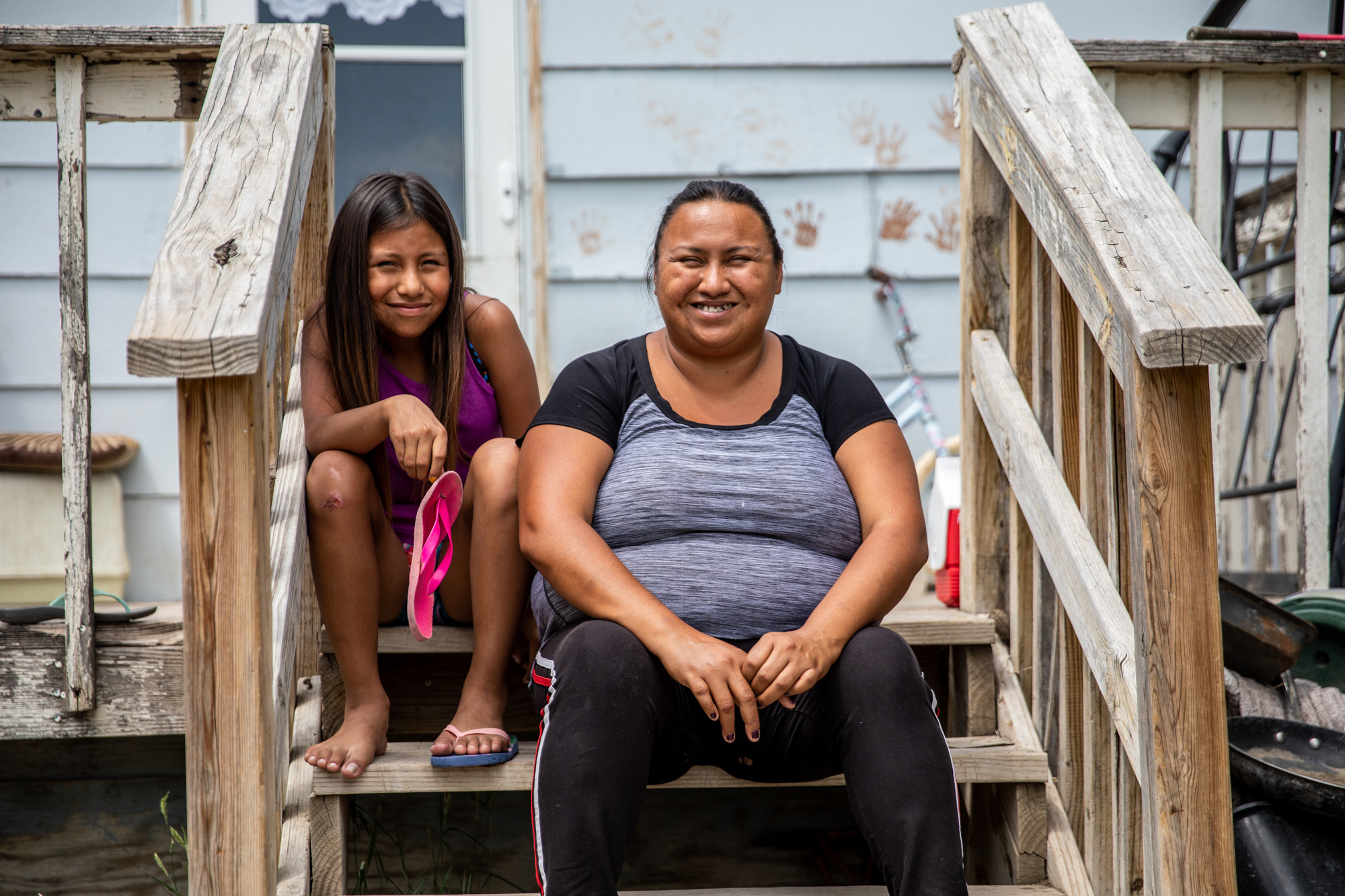
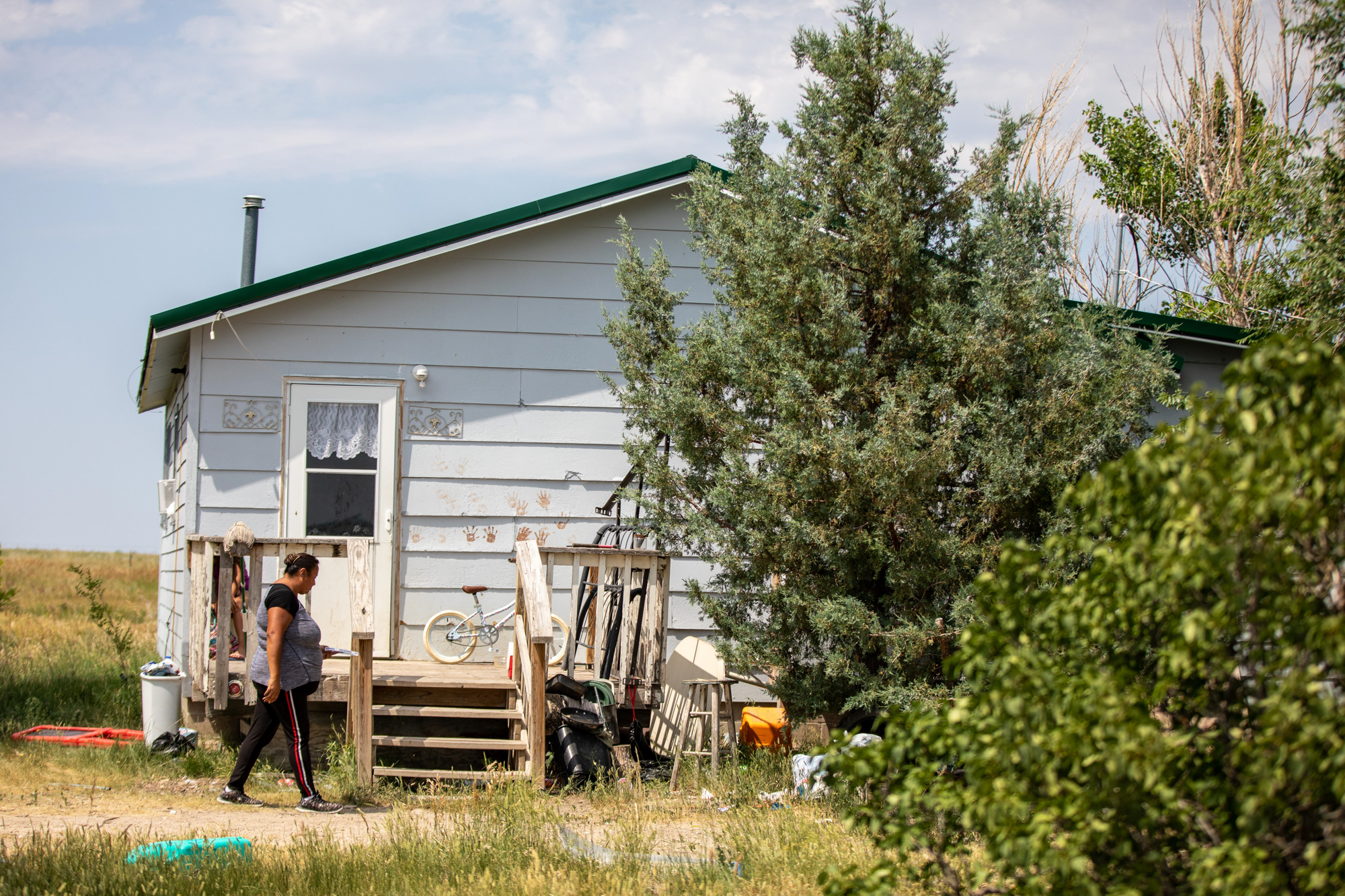
Rexanne Holy Dance with her daughter Leeann Lena outside their home on the Pine Ridge Reservation, South Dakota. Holy Dance has lived in the same house the majority of her life. Due to the shutdown of public transportation during the pandemic, Holy Dance and her daughter would walk several hours into town before being picked up by neighbors on the road. (Brenda Maytorena Lara/News21)
Despite the odds, some residents in rural America still hope that their towns will find a way to thrive.
Sitting in Grundy’s only Chinese restaurant, Shortridge, the Virginia historian and librarian, talks about all the efforts the town has made over the years to reinvent itself — building new structures to attract manufacturing, expanding internet access to improve the availability of jobs and education or using new housing developments and beautification projects to attract wealthy outsiders.
The restaurant sits in the shell of a building that was intended to house a factory. It never came. Community leaders keep trying.
Mueller, the researcher, said the 2008 recession serves as a model for rural America after COVID-19.
Rural America was hit harder than urban America and recovered much slower — many areas had still not fully recovered even before the pandemic, according to a study by the Center for American Progress.
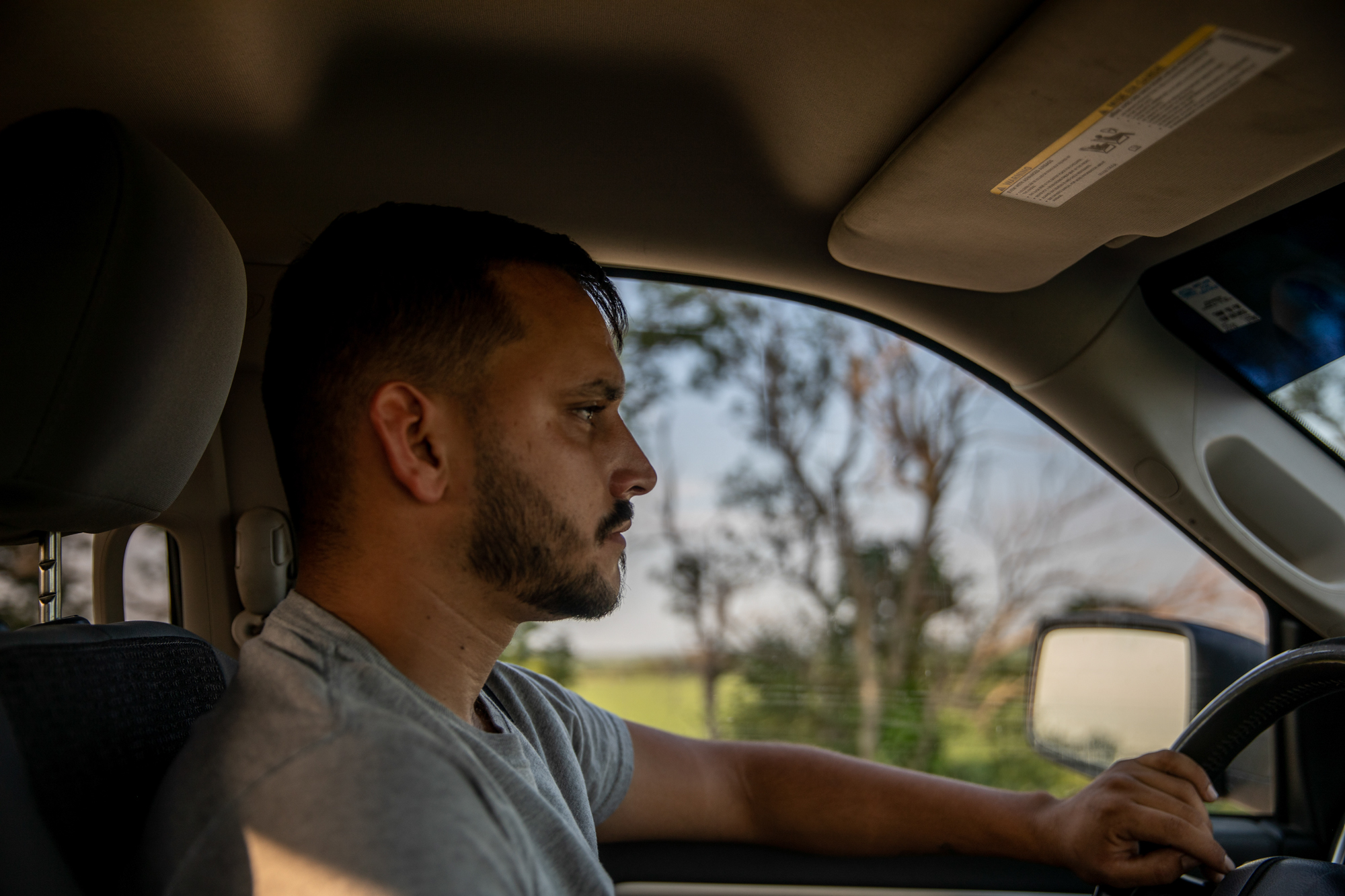
Fabian Carrasco, of Storm Lake, Iowa, often picks up his employees from their homes, drives them to work sites and pays for their lunch to compensate for pay cuts. (Brenda Maytorena Lara/News21)
The trouble, experts say, is there are few reliable solutions. Some rural communities, like Grundy, have lost the only economic reason they had to exist, while others, like Pine Ridge, are mired in poverty.
“The question is really how to create those (jobs). Who is going to make them, and why would they invest in these places that have been hollowed out and are emptying out?” said Jennifer Sherman, a professor who researches poverty, inequality and rural communities at Washington State University. “Those are the big questions that have to be answered before we’ll see any kind of growth.”
Shortridge is conflicted. Sometimes he talks of the possibilities, like the town turning the local fishing creek into a tourist draw. But he’s not sure Grundy will ever get back to the way it was.
“I’m not happy, because I’m at the end of something, and I cannot be happy about a brighter future,” Shortridge said.
For Carrasco, hope has already arrived. In early August, he opened a fertilizer-recycling business.
He now employs more than 20 people.